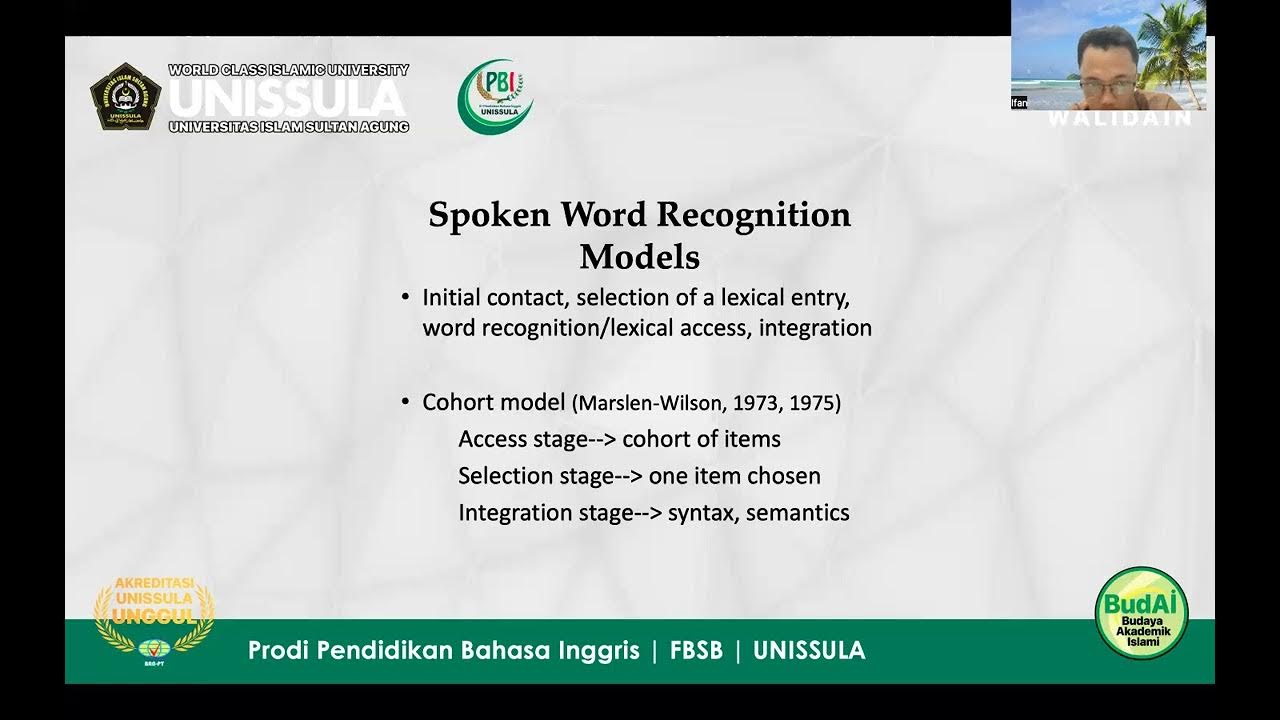Teaching by Principles. By H. Douglas Brown
Summary
TLDRThis lecture discusses 12 key principles essential for second language acquisition and effective teaching. These include concepts like automaticity, meaningful learning, strategic investment, and the connection between language and culture. The lecturer emphasizes the psychological aspects of learning, such as language ego, self-confidence, and risk-taking. Practical classroom techniques like coral drills and jigsaw tasks are also evaluated in light of these principles. The lecture encourages reflection on how these principles apply in different contexts, urging teachers and learners to assess their practices and motivations for more effective language learning outcomes.
Takeaways
- 😀 **Meaningful Learning**: Ensure that language materials are relevant, interesting, and challenging to improve long-term retention and real-world applicability.
- 😀 **Intrinsic Motivation**: Learners' internal drive to succeed in language acquisition should be nurtured through engagement and personal interest in the subject.
- 😀 **Anticipation of Reward**: The excitement and motivation derived from expecting a reward play a critical role in maintaining learner focus and dedication.
- 😀 **Strategic Investment**: Active engagement from learners in the language-learning process—balancing effort with commitment—results in better outcomes.
- 😀 **Language Ego**: Learners' self-perception and their confidence in using a new language can affect their ability to communicate effectively.
- 😀 **Self-Confidence**: Building students' self-confidence is essential for overcoming anxiety and encouraging risk-taking in language use.
- 😀 **Risk-Taking**: Encouraging students to take risks in using the language helps them improve fluency and overcome hesitation in communication.
- 😀 **Language-Culture Connection**: Language learning is deeply tied to cultural understanding; language teaching should integrate cultural context to improve communicative competence.
- 😀 **Native Language Effect**: A learner's first language can interfere with learning a new language, influencing pronunciation, grammar, and overall understanding.
- 😀 **Communicative Competence**: The ultimate goal of language learning is effective communication, which integrates various language skills in real-life, unrehearsed situations.
Q & A
What is the purpose of the lecture and what does the speaker aim to emphasize?
-The purpose of the lecture is to highlight key principles of language learning and teaching, specifically from Chapter 4 of the book 'Teaching by Principles.' The speaker aims to provide an overview of twelve principles that are important for effective second language acquisition and to explain several of them in detail.
How does the principle of 'meaningful learning' contribute to effective language learning?
-The principle of 'meaningful learning' emphasizes that lessons should be relevant, interesting, and challenging. This helps ensure better long-term retention and the ability to apply learned material to real-life situations, making learning more applicable and engaging.
What is the role of motivation in language learning, according to the speaker?
-Motivation, particularly intrinsic motivation, plays a crucial role in language learning. The speaker mentions 'anticipation of reward' and 'intrinsic motivation' as principles that drive learners to persist in their learning journey. Motivated learners are more likely to engage deeply with the material and retain information.
What does the principle of 'strategic investment' mean in the context of language learning?
-'Strategic investment' refers to learners actively investing their time and resources into their language learning process. The speaker suggests that this principle will be explored in Part 4 of the lecture, emphasizing the importance of learner engagement and deliberate practice.
Why are 'language ego', 'self-confidence', and 'risk-taking' important in language learning?
-'Language ego', 'self-confidence', and 'risk-taking' are all interrelated principles that emphasize how a learner’s perception of themselves and their willingness to take risks impact their language learning success. High self-confidence can help overcome fears of making mistakes, and risk-taking enables learners to practice and improve in real communicative contexts.
How does the principle of 'language-culture connection' impact language learning?
-The 'language-culture connection' highlights the inseparable link between language and culture. Language teaching should not only focus on linguistic structures but also incorporate cultural contexts, as understanding cultural nuances enhances language use and communication skills in real-world situations.
What is the 'native language effect' and how does it influence second language learning?
-The 'native language effect' refers to the influence of a learner’s first language on the acquisition of a second language. It can cause interference in pronunciation, grammar, and sentence structure, making it important for teachers to account for these differences and help learners navigate them.
What is 'interlanguage', and why is it significant in the language learning process?
-'Interlanguage' is a transitional stage in language learning, where learners mix elements of their native language with the target language. It represents the process of moving from beginner to more fluent language use, and understanding interlanguage helps teachers address errors and support learners’ progression.
What is meant by 'communicative competence' and why is it the ultimate goal of language learning?
-Communicative competence refers to the ability to use a language effectively and appropriately in real-life situations, including both spoken and written forms. It is considered the ultimate goal of language learning because it emphasizes practical language use over theoretical knowledge.
How can teachers evaluate the success of language learning techniques in relation to the principles discussed?
-Teachers can evaluate language learning techniques by aligning them with the twelve principles. For example, they can assess whether a technique promotes language ego, autonomy, or automaticity, and determine its effectiveness based on these principles. Techniques like oral drills, role plays, and jigsaw tasks can be evaluated in terms of how they support learner engagement, confidence, and fluency.
Outlines

Dieser Bereich ist nur für Premium-Benutzer verfügbar. Bitte führen Sie ein Upgrade durch, um auf diesen Abschnitt zuzugreifen.
Upgrade durchführenMindmap

Dieser Bereich ist nur für Premium-Benutzer verfügbar. Bitte führen Sie ein Upgrade durch, um auf diesen Abschnitt zuzugreifen.
Upgrade durchführenKeywords

Dieser Bereich ist nur für Premium-Benutzer verfügbar. Bitte führen Sie ein Upgrade durch, um auf diesen Abschnitt zuzugreifen.
Upgrade durchführenHighlights

Dieser Bereich ist nur für Premium-Benutzer verfügbar. Bitte führen Sie ein Upgrade durch, um auf diesen Abschnitt zuzugreifen.
Upgrade durchführenTranscripts

Dieser Bereich ist nur für Premium-Benutzer verfügbar. Bitte führen Sie ein Upgrade durch, um auf diesen Abschnitt zuzugreifen.
Upgrade durchführen5.0 / 5 (0 votes)






